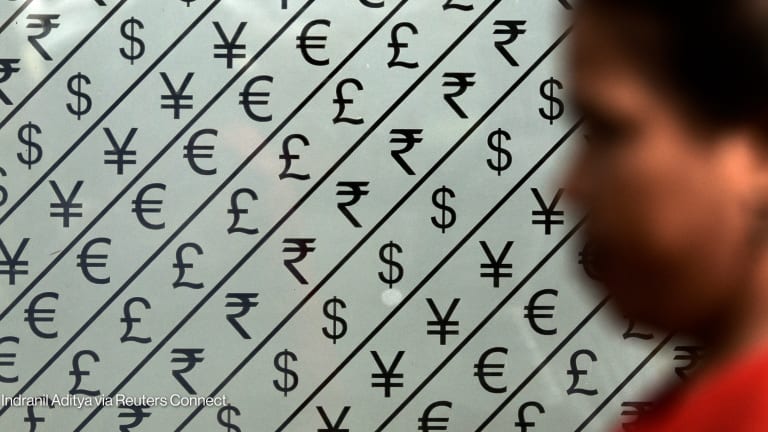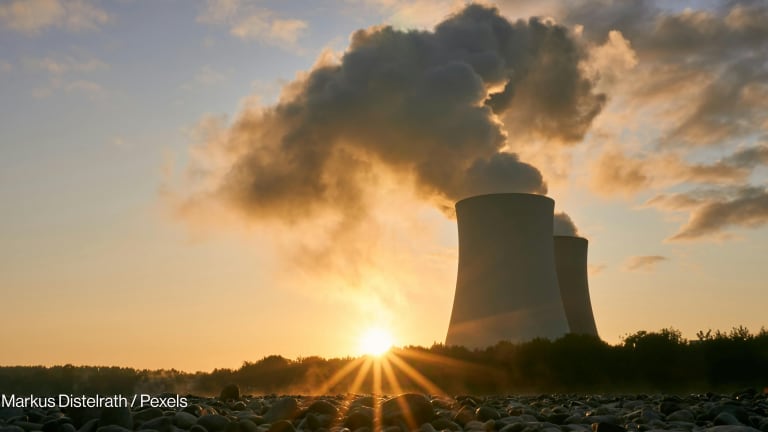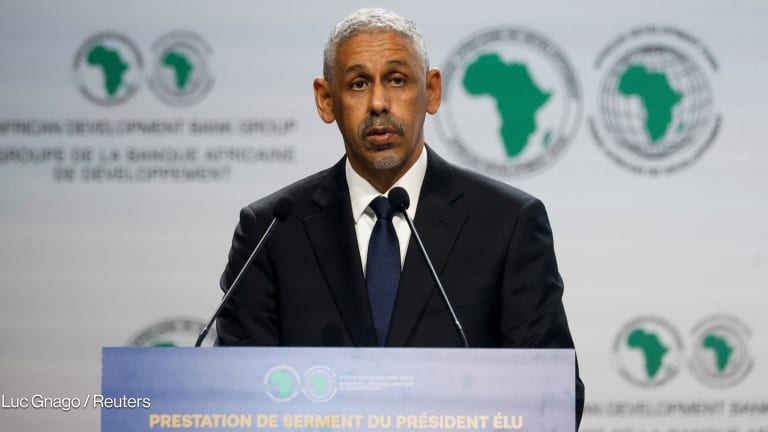$20B in financing should be ‘new normal’ for Latin America: IDB head
After the Inter-American Development Bank set a financing record in 2021, President Mauricio Claver-Carone lays out his priorities for 2022.
The Inter-American Development Bank set a record with its financing in 2021, reaching $23.4 billion in new funding approvals, commitments, and private sector mobilizations. The figure includes financing from the regional multilateral development bank’s private sector arm, IDB Invest. This marks only the second time that IDB’s annual financing has surpassed $20 billion, with the first being 2020. In a wide-ranging interview with Devex, IDB President Mauricio Claver-Carone said he hopes to leverage this progress to meet the challenges facing the Latin American and Caribbean region, such as inflation and debt, while advancing his “Vision 2025” agenda that prioritizes green investments and “nearshoring” jobs. “It’s important to set that benchmark as the new normal for our financing levels. … Part of the reason that we needed and we were asking for — and we were working with our shareholders on finishing the analysis for — our capital increase is so that $20 billion-plus can become the new normal,” Claver-Carone said. “We have shown our shareholders — and our major shareholders, particularly — how we are optimizing our balance sheet and putting that money to good use.” The Latin American and Caribbean region needs the investment: It is facing large economic headwinds coming out of the coronavirus pandemic, as it has seen nearly 30% of the world’s COVID-19 deaths despite only having 8% of the world’s population. In terms of gross domestic product, growth was negative 6.7% in 2020 but shot up to 6.2% in 2021, due in part to the remarkably low base line the year before. Even before the pandemic disrupted the ability of many of the region’s informal workers to earn their daily wages, the Latin American and Caribbean region was struggling from an anemic growth rate, which was below 1% in 2019. Claver-Carone said that as he makes the case for a capital increase for the bank — the previous one in 2010 brought the total capital to $170 billion — to its shareholders and governors, he will steer IDB to prioritize the five pillars of the Vision 2025 agenda: climate investments, nearshoring jobs, gender, digitalization, and financing for small- and medium-sized enterprises. The bank has presented an analysis of the value proposition for a capital increase to its board, and it will do the same for the governors this year, Claver-Carone said. The U.S. is the bank's largest shareholder at 30%, and a bill to authorize up to $80 billion for a capital increase was introduced in the U.S. Senate last year. “There’s recognition of the work that we’re doing, and I'm proud of that,” Claver-Carone said. “We’ll present this analysis to the governors of the bank now in March, and hopefully from there we can get a mandate to then present various formulas having shown the needs, the unique value proposition of the bank.” One major way that IDB can advance its agenda is through increased relationships with private sector companies, he said. The bank last year created a new coalition of 40 company leaders — the largest in bank history, according to Claver-Carone — to encourage increased investment, with executives from Amazon, Google, and Walmart. It has since grown to 160 members, he said. Claver-Carone wants the bank to be a “matchmaker” in the region that mobilizes corporate investment in areas such as public infrastructure, he said. “We want to be originators: originators of deals, originators of projects that are going to have the highest development impact and have the biggest bang for their buck in the region,” Claver-Carone said. “The only way to do so is literally working at the ground level with all these companies, all these investors, and going out there and finding the best deals.” Two major barriers have contributed to the traditionally low growth of private sector investment in the region, he said: political risk and currency risk. “Unfortunately, I think that Latin America and the Caribbean is held to an unfair metric of political risk. If you compare it to other regions of the world, it’s where … political risk is predominate in regards to institutional investors. And I think unfairly so,” Claver-Carone said. “We’ve really worked hard to help break stereotypes from governments in the region.” He highlighted that IDB worked closely in 2021 with Peru and Chile, which both had elections last year, to encourage continuity and confidence in each country’s economy despite the political transitions. The bank intends to do the same in Colombia and Brazil — which has the largest economy in the region — as both of those countries are set to elect new presidents in 2022. The fact that many nations in Latin America and the Caribbean are classified as middle- or high-income has also stunted investment, Claver-Carone said, and kept away Western development finance institutions that focus on low-income countries. Latin America has the highest inequality of any region in the world, and the COVID-19 crisis drove 50 million people out of the middle class after its ranks grew for decades, Claver-Carone said. In the year before the pandemic began, Chinese companies invested $12.8 billion in Latin America, up 16.5% from 2018. “There are countries that have had to turn to China not because it was their first choice, but because they had no other choice because they were high-income,” Claver-Carone said. “Not only are development finance institutions in the United States and others prohibited by law in financing projects there, but then they tie our hands as well. They oppose us doing so.” He added, “We’re making progress in having the world and the development world look at Latin America based on the socioeconomic needs and gaps versus these antiquated macro labels.” IDB also wants to use nearshoring — particularly from Asia — to create more jobs in the region. “If there’s any company that has a manufacturing facility in China and wants to move it to a country in Latin America and the Caribbean, the IDB will finance that move. We’ll work with them as partners. We’ll give them a great deal in order to move that facility and create jobs in Latin America and the Caribbean,” Claver-Carone said. “This is not about geopolitics. People say, ‘Oh, is this an anti-China thing?’ No, this is a pro-Latin America and the Caribbean thing. If there’s a call center in India that wants to move its facility to Jamaica or to Barbados or to Belize, I will finance that move.” “We [at IDB] want to be originators … of projects that are going to have the highest development impact and have the biggest bang for their buck in the region.” --— Mauricio Claver-Carone, president, Inter-American Development Bank Climate will be a major focus as he runs the bank, Claver-Carone said. He intends to align the bank’s portfolio with the Paris Agreement, and IDB was asked to lead a coalition of multilateral development banks on a statement for the 26th United Nations Climate Change Conference that lays out how the institutions will promote nature in their policies and investments. “We have been the leaders of green finance in the region. … We’ve helped about a dozen countries with various green bonds and in various currencies. We’re helping them with innovative climate finance,” Claver-Carone said. “The message we sent in COP 26 is how climate finance is going to contribute to growth, how it’s going to contribute to job creation, how it’s going to be a net positive for countries in Latin America and the Caribbean.” In April, IDB launched the Green Bond Transparency Platform to allow investors to track whether environmental, social, and governance metrics are truly being met over the life of a project. Claver-Carone said he “obsesses” over the fact that there is over $35 trillion “sitting on the sidelines” of private capital that is looking to invest in ESG. That number is projected to reach over $53 trillion by 2025, he said. “If Latin America and the Caribbean can capture by 2025 10% of that, that’s … [$4 trillion] or $5 trillion,” Claver Carone said. “That would be transformative for the region.”
The Inter-American Development Bank set a record with its financing in 2021, reaching $23.4 billion in new funding approvals, commitments, and private sector mobilizations. The figure includes financing from the regional multilateral development bank’s private sector arm, IDB Invest.
This marks only the second time that IDB’s annual financing has surpassed $20 billion, with the first being 2020. In a wide-ranging interview with Devex, IDB President Mauricio Claver-Carone said he hopes to leverage this progress to meet the challenges facing the Latin American and Caribbean region, such as inflation and debt, while advancing his “Vision 2025” agenda that prioritizes green investments and “nearshoring” jobs.
“It’s important to set that benchmark as the new normal for our financing levels. … Part of the reason that we needed and we were asking for — and we were working with our shareholders on finishing the analysis for — our capital increase is so that $20 billion-plus can become the new normal,” Claver-Carone said.
This story is forDevex Promembers
Unlock this story now with a 15-day free trial of Devex Pro.
With a Devex Pro subscription you'll get access to deeper analysis and exclusive insights from our reporters and analysts.
Start my free trialRequest a group subscription Printing articles to share with others is a breach of our terms and conditions and copyright policy. Please use the sharing options on the left side of the article. Devex Pro members may share up to 10 articles per month using the Pro share tool ( ).
Teresa Welsh is a Senior Reporter at Devex. She has reported from more than 10 countries and is currently based in Washington, D.C. Her coverage focuses on Latin America; U.S. foreign assistance policy; fragile states; food systems and nutrition; and refugees and migration. Prior to joining Devex, Teresa worked at McClatchy's Washington Bureau and covered foreign affairs for U.S. News and World Report. She was a reporter in Colombia, where she previously lived teaching English. Teresa earned bachelor of arts degrees in journalism and Latin American studies from the University of Wisconsin.








